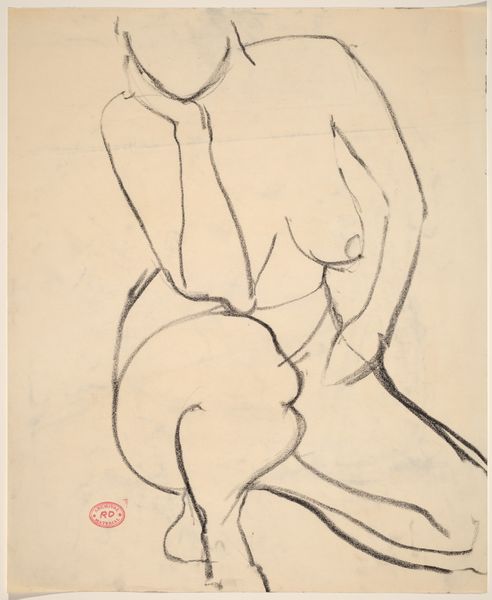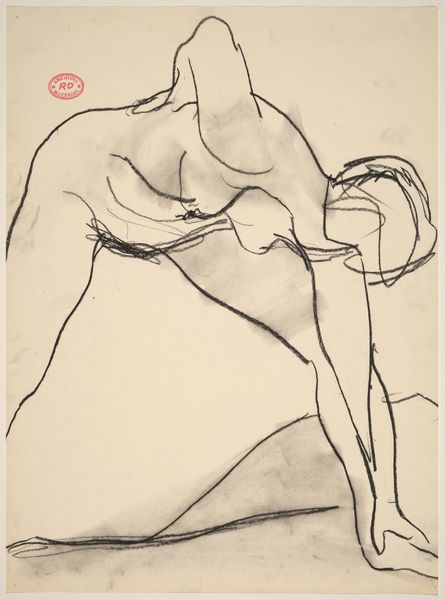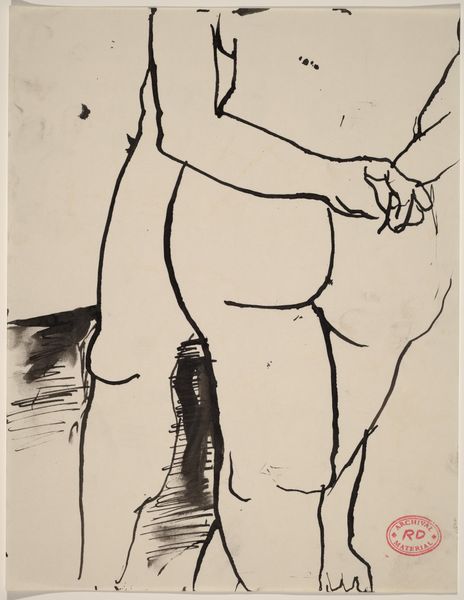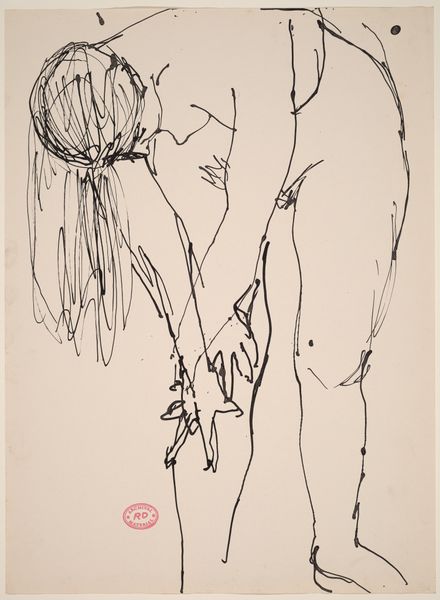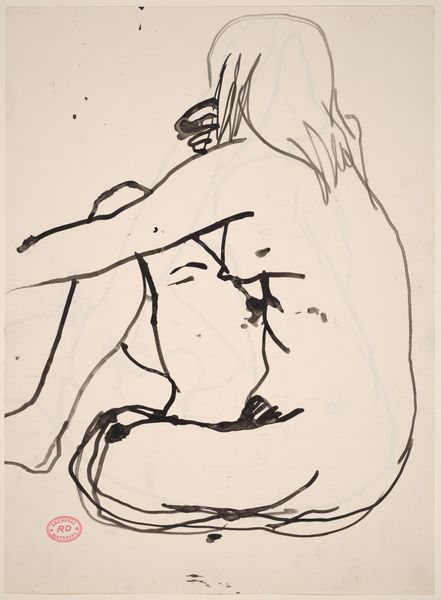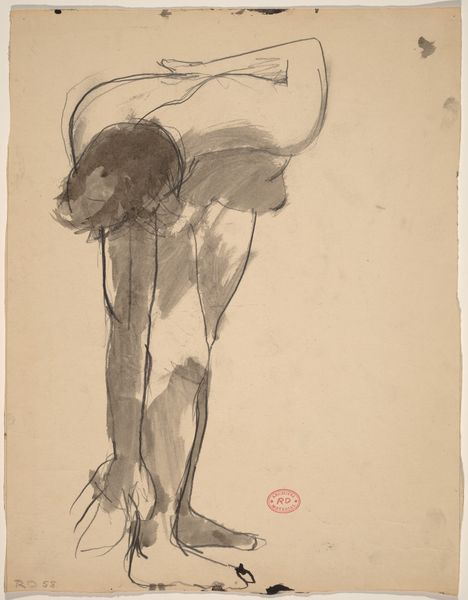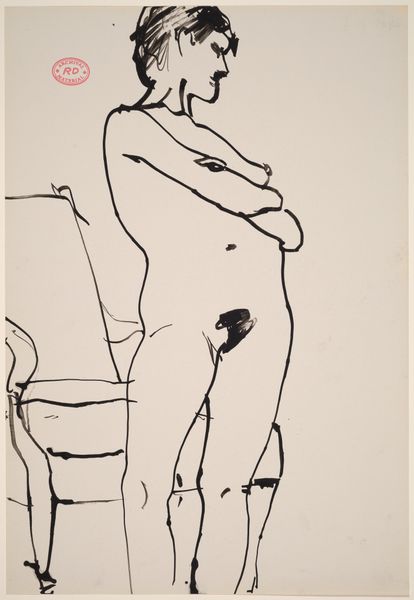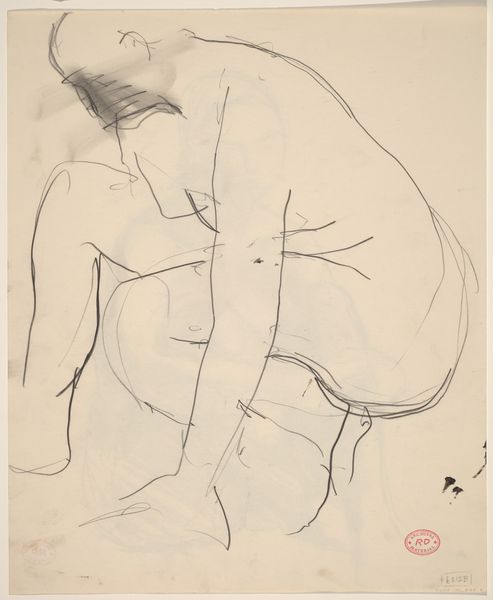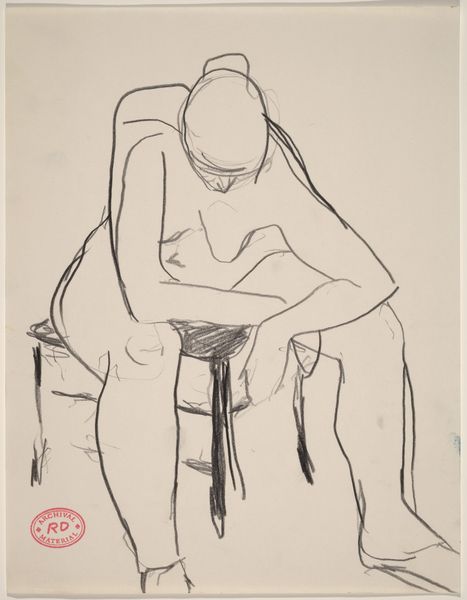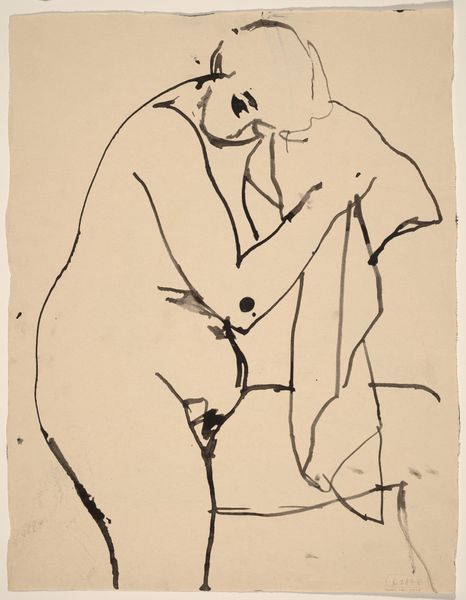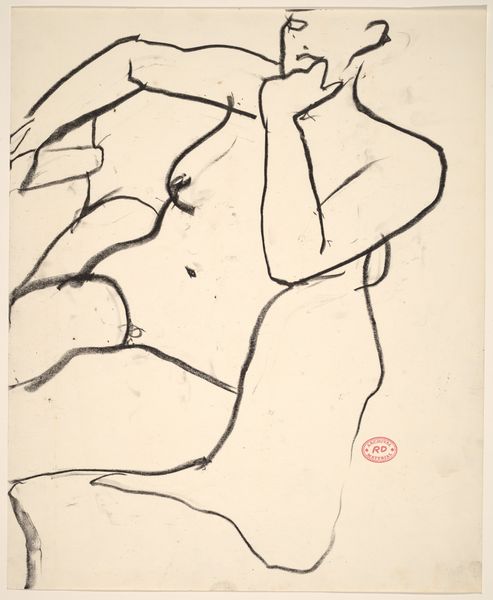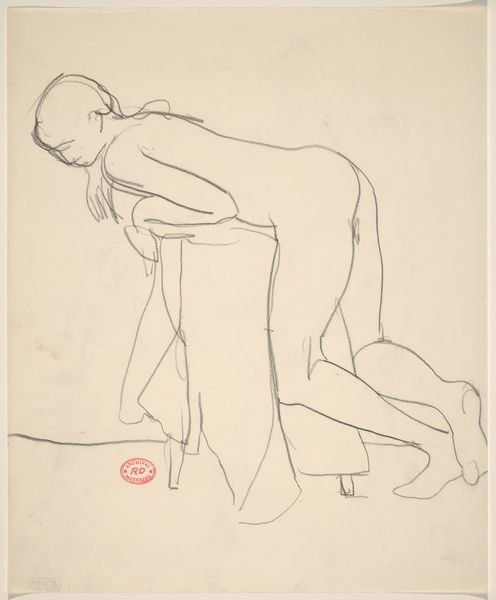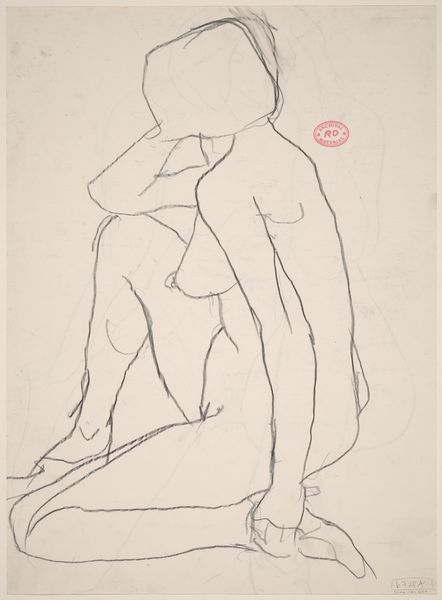![Untitled [nude bending and reaching down with her right hand] by Richard Diebenkorn](/_next/image?url=https%3A%2F%2Fd2w8kbdekdi1gv.cloudfront.net%2FeyJidWNrZXQiOiAiYXJ0ZXJhLWltYWdlcy1idWNrZXQiLCAia2V5IjogImFydHdvcmtzLzc5YTcxMzIyLTUzODYtNGZiNi1hOTEwLTFmM2U1ZWRhODA2Yy83OWE3MTMyMi01Mzg2LTRmYjYtYTkxMC0xZjNlNWVkYTgwNmNfZnVsbC5qcGciLCAiZWRpdHMiOiB7InJlc2l6ZSI6IHsid2lkdGgiOiAxOTIwLCAiaGVpZ2h0IjogMTkyMCwgImZpdCI6ICJpbnNpZGUifX19&w=3840&q=75)
Untitled [nude bending and reaching down with her right hand] 1955 - 1967
0:00
0:00
drawing, ink
#
drawing
#
ink drawing
#
figuration
#
bay-area-figurative-movement
#
ink
#
line
#
nude
Dimensions: overall: 58.1 x 43.2 cm (22 7/8 x 17 in.)
Copyright: National Gallery of Art: CC0 1.0
Curator: Here we have an ink drawing by Richard Diebenkorn, created sometime between 1955 and 1967. The piece is called *Untitled [nude bending and reaching down with her right hand]* and it's a striking example of his approach to figuration. Editor: The bold, almost careless lines give it a real sense of immediacy, don't you think? The pose, with the figure bending over, creates a vulnerable yet powerful tension. It feels both intimate and a little uncomfortable, confronting the viewer with the realities of the human form. Curator: Absolutely. The drawing style contrasts interestingly with the cultural context of mid-century American art. At the time, Abstract Expressionism dominated the art world, with its emphasis on the heroic artist and large scale abstraction, but we see Diebenkorn continually engaging with representation, using a linear approach to redefine the genre. Editor: It’s a very assertive use of line, and those blocks of solid ink create a dramatic effect, but I wonder about the woman’s experience. Is she caught in a moment of everyday labor, or is there some underlying message? Does the abstraction unintentionally distance her from us, even as it renders her body? Curator: I see it more as an exploration of form rather than a specific commentary. The composition invites viewers to engage in an aesthetic exchange around the subject as we follow how Diebenkorn employed the fluidity of ink in achieving form, volume and even shade. The reductive style removes cultural reference so it transcends from being seen simply as a female nude. Editor: I appreciate that. It challenges me to think about how images of the nude are consistently situated within larger social frameworks—consider the traditional male gaze and how Diebenkorn negotiates or perhaps unconsciously perpetuates that power dynamic. Even seemingly simple line drawings hold embedded assumptions about the body and representation. Curator: Perhaps, and it's a conversation worth continuing as we think about the continued role of art within society, especially its capacity to reshape established narratives. Editor: Agreed. Reflecting on its social dimensions, it provokes critical questions that enhance, rather than diminish, the piece’s lasting artistic merit.
Comments
No comments
Be the first to comment and join the conversation on the ultimate creative platform.
